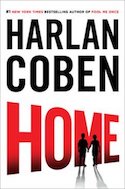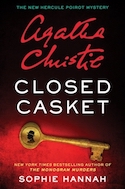Criminal Fiction: our inaugural mystery, suspense and thriller column
New column! Every month, Daneet Steffens is going to uncover the latest goings on in mystery, suspense, and crime fiction. Welcome Daneet!
I’m delighted to be kicking off this column for the Seattle Review of Books during a month full of crime-fiction action. Bloody Scotland, Scotland’s International Crime Writing Festival, toasted its fourth year, crowning Christopher Brookmyre with the top McIlvanney Prize, and featuring the traditional England crime writers vs. Scottish crime writers football match (England won, 7-1). Stateside, Bouchercon took over New Orleans, a city made for murder mysteries, police procedurals, and vampiric thrillers: Seattle native Glen Erik Hamilton picked up the Best First Novel, and Mark Billingham, Doug Johnstone, Stuart Neville, and Bill Loehfelm rocked out at the New Orleans House of Blues. And, back in the UK, the third Noirwich weekend in Norwich welcomed a rich range of crime writers including Ian Rankin, Denise Mina, Eva Dolan, Sarah Hilary, Peter James, and Dreda Say Mitchell.
Reading around: new titles on the crime fiction scene





The Quintessential Interview: Chris Holm
In 2015, Chris Holm’s The Killing Kind — which just won the Anthony Award for Best Novel at Bouchercon — introduced Michael Hendricks, a hit man who targets other hit men. Its follow-up, Red Right Hand, finds Hendricks on a bit of a revenge trip when FBI Special Agent Charlie Thompson taps him for assistance: a viral video of a terrorist attack in San Francisco reveals that an FBI witness whom everyone thought was dead is, in fact, very much alive. Red Right Hand is perfectly paced page-turner: Holm elegantly juggles multiple characters, perspectives and locations, without a single misstep.What or who are your top five writing inspirations?
I have a deep and abiding love of classic pulp. I’m fascinated by what drives good people to do bad things. By how bad one can be without becoming irredeemable. By the slipperiness of identity and what we consider to be our essential selves. And I should give a nod to my adopted hometown of Portland, Maine, since I never seriously considered pursuing a writing career until I moved here—and I worry the words will dry up if I ever leave.
Top five places to write?
The left side of my couch. The University of New England’s Westbrook College Campus library. Coffee By Design on Diamond Street. The right side of my couch. On the backs of receipts at stop lights in my car.
Top five favorite writers?
I’m only allowed five?! I just broke out in a cold sweat. Today, let’s say Megan Abbott, Raymond Chandler, Tim Powers, Donna Tartt, and Donald Westlake. Tomorrow, I might cough up a whole new list.
Top five tunes to write to?
My favorites include Benny Goodman Orchestra’s “Sing Sing Sing (With a Swing),” Budos Band’s “The Sticks,” DJ Shadow’s “Organ Donor,” Mono’s “Ashes in the Snow,” and Rodrigo y Gabriela’s “Diablo Rojo.” I have a tough time writing to anything that features words, so all my picks are instrumental. I use them sparingly, whenever I feel as if my writing needs a boost.Top five hometown spots?
The secret garden behind Henry Wadsworth Longfellow’s house on Congress Street. The tasting room at Allagash. The gloomy labyrinth that is Portland Architectural Salvage. Fort Williams Park in Cape Elizabeth. And Halcyon Tattoo in Windham.